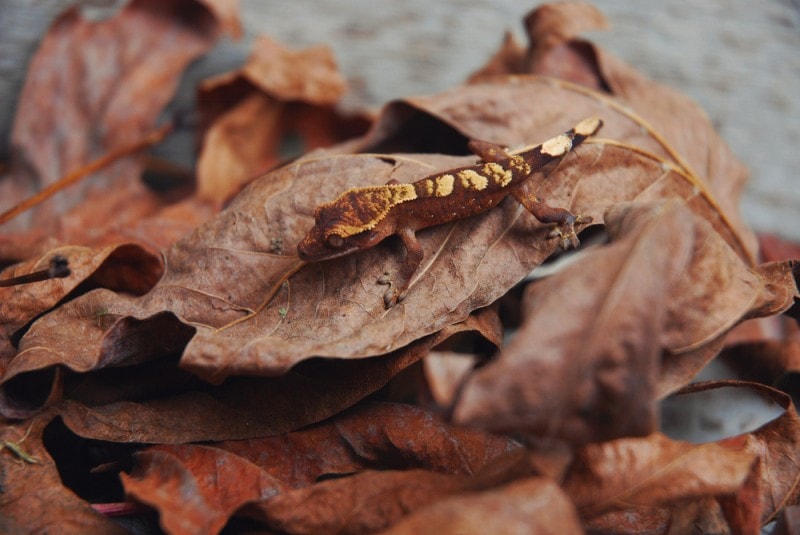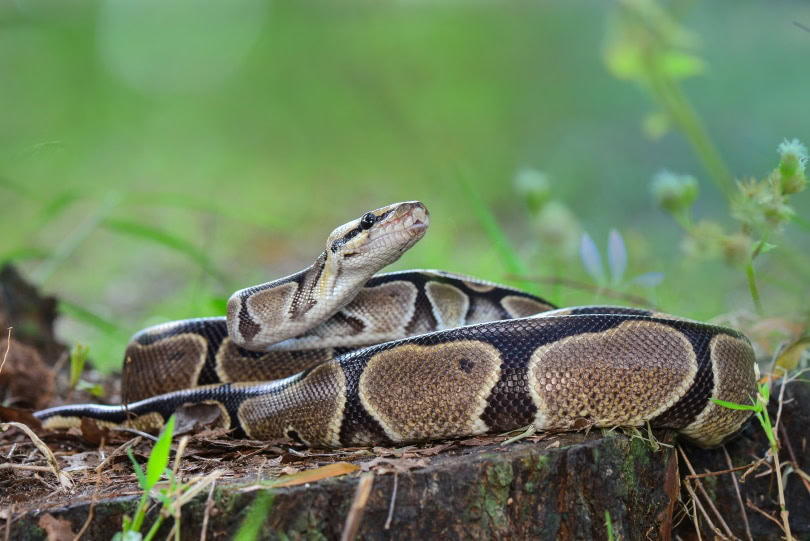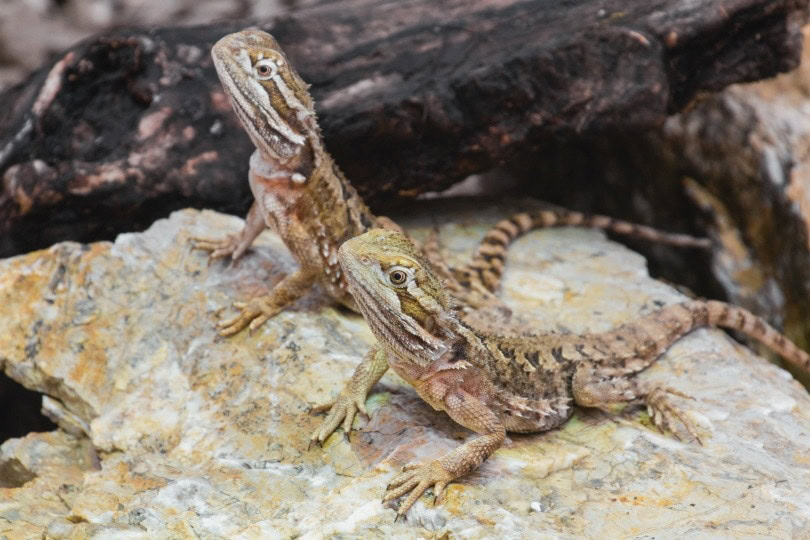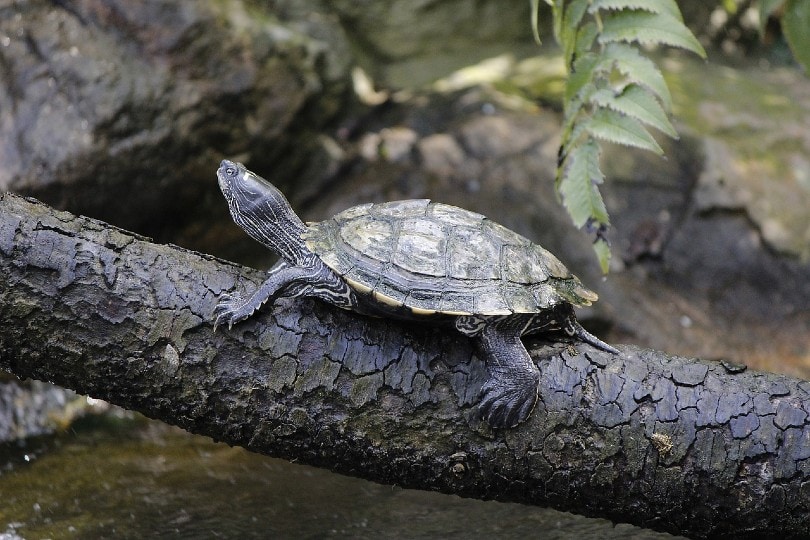Click to Skip Ahead
Crested geckos (Correlophus ciliatus) are ideal reptiles for beginners, as they are relatively simple and easy to look after. That said, these reptiles can live for up to 20 years, so they are a large responsibility that should not be taken lightly. With this long lifespan, you’ll want to make sure they have the best enclosure possible.
Housing a crested gecko is a fairly simple, low-cost project, and the minimum requirements for them to live a happy and healthy life are easy to meet. Crested geckos are arboreal animals (animals that live terrestrial lives and spend a significant amount of time in trees) that love to climb and jump, and as such, you’ll need a terrarium or cage that is higher than it is long.
In this article, we’ll go over the steps involved in choosing the right terrarium size for Crested Geckos, as well as other tips to make sure they live long and healthy lives!

Before You Start
The main consideration of housing a crested gecko correctly is that these animals love to climb, and as such, they are far better suited to having a vertical enclosure. A standard horizontal enclosure that is commonly used for reptiles simply won’t do for these geckos, so this is the most important aspect of their housing.
Crested geckos do not cost much to purchase, and their tank is where you’ll be spending most of your money. A suitable enclosure, loaded with a substrate and plenty of plants and branches to climb on, can easily set you back several hundred dollars, so you should consider this carefully in your budget.
While this may seem like an expensive initial outlay, the subsequent costs of looking after a crested gecko are fairly inexpensive, so once you have a suitable enclosure, you are good to go!
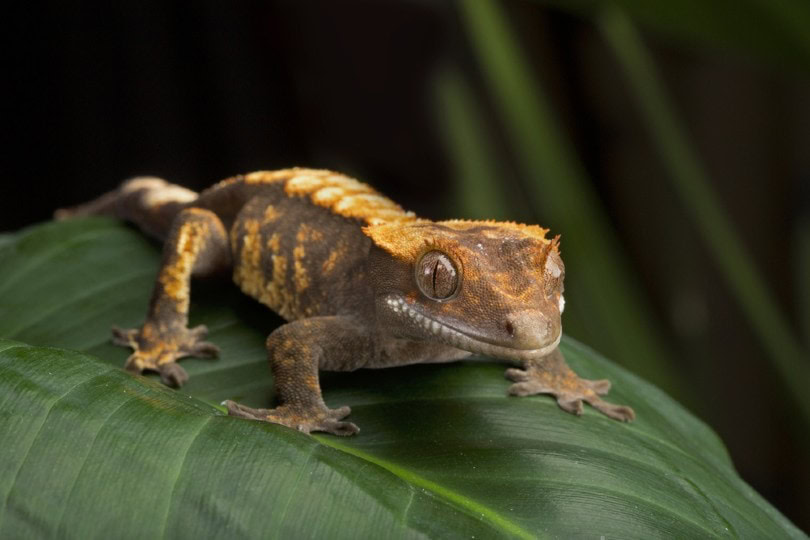
Types of Enclosures
The first step in choosing the right size habitat for your crested gecko is deciding on the type you want.
- Vivariums
- Aquariums
- Cages
Vivariums are glass enclosures commonly used for housing reptiles and amphibians and are the ideal choice for crested geckos. Aquariums are also glass but are typically used to house fish, although they do have use in housing reptiles too. For crested geckos, however, the horizontal layout of most aquariums makes them less than ideal.
Lastly, mesh cages can also be used for crested geckos. They are typically a plastic or aluminum frame with a nylon or fiberglass mesh screen and provide great ventilation for misting, although they are difficult to keep temperature-controlled.

Minimum Enclosure Requirements
No matter the type of enclosure that you decide to go with, the following guidelines can serve as a good starting point for your pet’s enclosure
- For a hatchling: 12” L x 12” W x 12” H
- For a juvenile/adult: 18” L x 18” W x 36” H
Please do note that the guidelines above are minimum requirements for a single crested gecko. Your crested gecko would definitely benefit from having a larger enclosure to explore and climb in. A larger enclosure also offers more ease in terms of establishing and maintaining a temperature gradient, which is a welcome perk for your crested gecko’s long-term health.
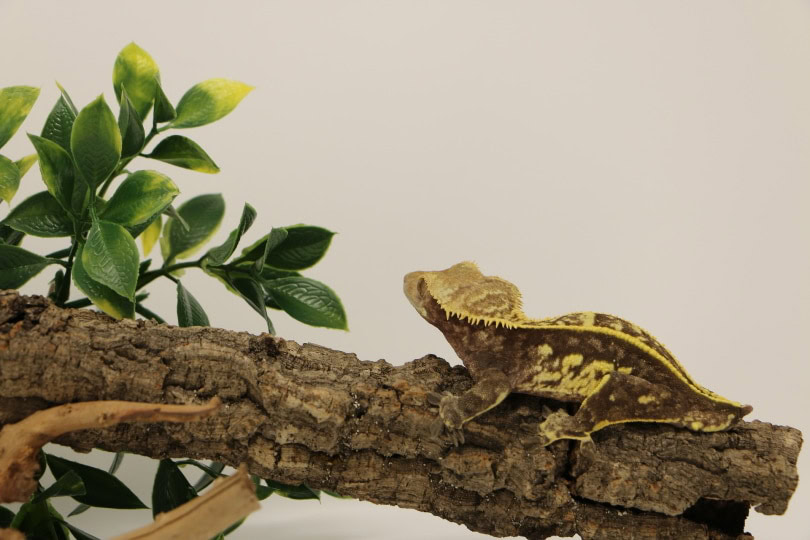
For Housing Multiple Crested Geckos
Crested geckos are best kept as solitary pets. This is due to the fact that they are territorial in nature, and housing multiple geckos in the same enclosure may lead to squabbles, injuries, tail-nipping, tail loss, crest biting, weight loss, and in some cases the loss of a pet. If such signs are observed, you must separate your geckos promptly and seek veterinary care for them.
If you do insist on having more than one crested gecko, multiple females are your safest bet. However, we must reiterate that though such a setup is your safest bet, it doesn’t mean it is risk-free. In general, it is very difficult to justify housing multiple crested geckos (of any sex) together, as the perceived benefits of such a setup do not outweigh the risks.
Nonetheless, the following are guidelines for an enclosure for multiple crested geckos
- Enclosure should be at least twice as voluminous as that for a single crested gecko for each additional gecko added.
- You will need to include multiple food and water sources/dishes.
- You will also need to incorporate multiple basking spots.
- You will need to provide additional cover, caves, barriers, and hiding places.
Lighting & Temperature Control
While crested geckos are hardy little reptiles, they still need strict lighting and temperature controls. Crested geckos are nocturnal, meaning they do not have a strict requirement for lighting as pets. Nonetheless, a general consensus among the veterinary community is that they would still benefit from lighting which helps mimic a day and night cycle.
Crested geckos require around 14 hours of lighting during the summer months and approximately 10 hours of lighting during the winter months. It is advisable to slowly transition between these ranges during the autumn/spring months. Contrary to popular belief, crested geckos do not need lighting at night; their visual acuity lets them view their surroundings in darkness.
Reptiles kept as pets without a specific lighting requirement may also benefit from the inclusion of UVB lighting in their enclosure and as such, adding lighting for your crested gecko is definitely something you may want to consider.
A heat bulb (if not built into your light) is recommended for your crested gecko. Like all pet reptiles, crested geckos require a temperature gradient in their enclosure. The following temperature guidelines are recommended for crested geckos.
- Basking area (usually at the top of the enclosure): 82–85°F (28–29°C)
- Cool area (usually at bottom of enclosure): 70–75°F (21–24°C)
- Nighttime temperature: 65–72°F (18–22°C)
Do note that the enclosure for most hatchlings will not accommodate an overhead heat source; placing the heat source on the side of the enclosure is recommended for hatchling enclosures.
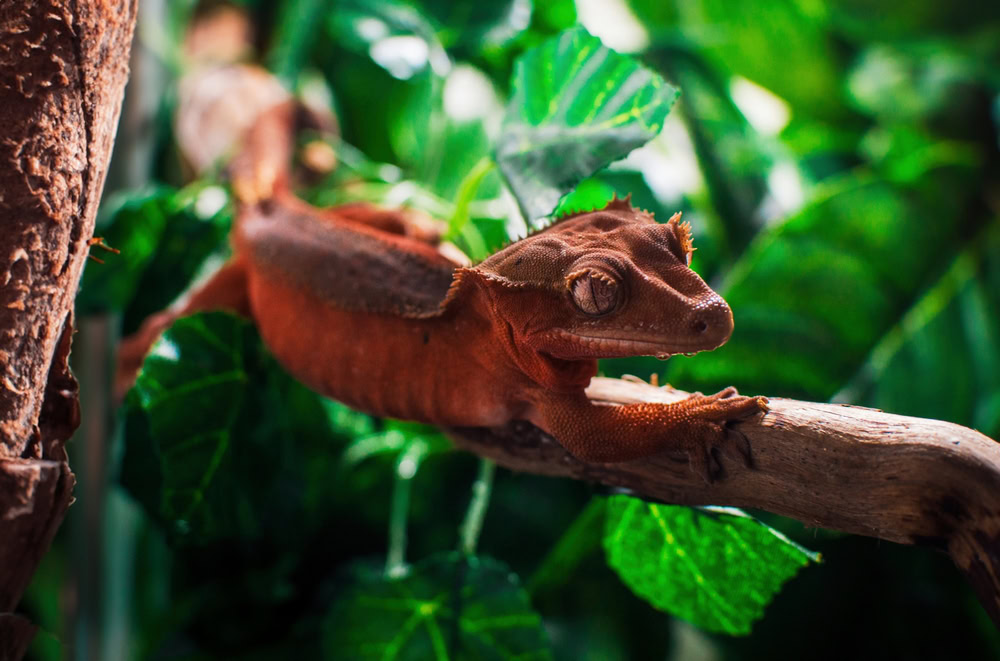
Humidity Guidelines
Crested geckos have a high humidity requirement and do best at around 60-80% humidity. The easiest way to achieve this is by using a moisture-retentive substrate and misting it on a daily basis.
It is important to let your crested gecko’s substrate dry out to about 45–50% humidity before misting it again. This is to ensure that mold does not grow in your crested gecko’s substrate. Understandably, exposure to mold can make your crested gecko sick.
Substrate
Your crested gecko will also need an appropriate substrate for their enclosure. This should be around 3-4 inches in thickness.
- Zoo Med Reptisoil
- Josh’s Frogs BioBedding Tropical Bioactive Reptile Substrate
- Paper towels (an economical alternative)
There are also some substrates that you want to avoid purchasing for potential health issues they may cause.
- Bark and small wood chips
- Pine/cedar-based substrates
- Shelf liner
- Linoleum
Coconut husk is another somewhat controversial option. Though some people like mixing it in their crested gecko’s substrate and have successfully used it with no reported issues, there is concern about a pet potentially ingesting it; coconut husks may then expand within your pet’s body and lead to a potential impaction.
Location
Your crested gecko’s enclosure should be placed in a draft-free environment, away from loud noises and temperature fluctuations, and in a room with a relatively stable environment. Direct sunlight is not recommended, as it may alter the temperature of your pet’s enclosure.
Accessories
There are several other essentials that need to be in your gecko’s cage. Living or fake plants will provide a place for them to hide and feel safe; “humid hides” are also great and are basically small containers with moist substrate inside.
As these animals love to climb, you’ll want to provide them with plenty of foliage, branches, and shrubs to play on. These will also add to the natural feel of their enclosure and help mimic their natural environment as closely as possible.


Final Thoughts
Crested geckos are not hugely complicated animals to keep as pets, which is largely what makes them such a popular pet reptile. Provided that they have sufficient space in their cage to climb, play, and hide, they should live long and happy lives. When choosing the right cage size for your crested gecko, the choice is up to you and what you can manage, although as with any reptile, bigger is always better!
- Related Read: What Do Crested Geckos Eat in the Wild & as Pets?
Featured Image Credit: Catherina Reynolds, Shutterstock
